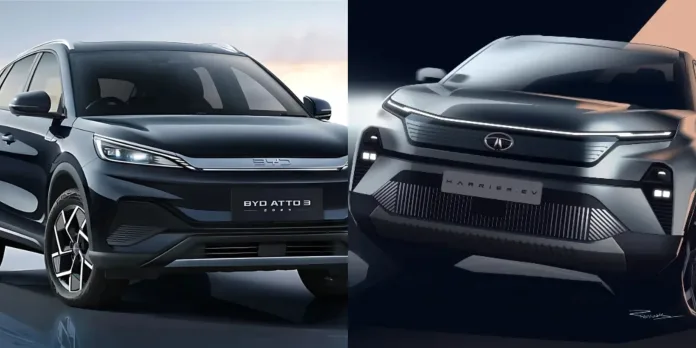Comparing BYD Atto 3 vs Tata Harrier EV? Discover which electric SUV offers better range, features, and value for Indian buyers in our comprehensive guide.
Table of Contents
The Electric Revolution Reaches Indian Roads
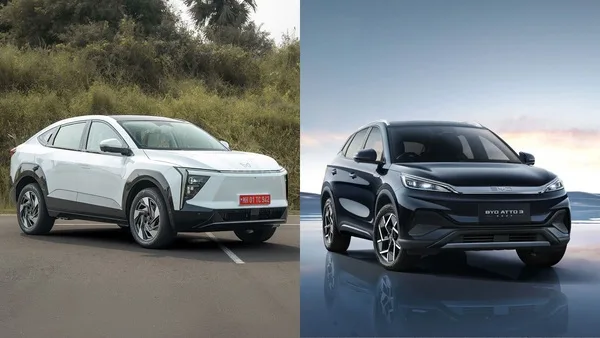
India’s electric vehicle landscape is transforming rapidly. As more manufacturers enter the market, consumers face increasingly difficult choices when selecting their next EV. Two models generating significant buzz are the BYD Atto 3 and the upcoming Tata Harrier EV. Both represent different approaches to electric mobility – one from an established global EV giant making inroads into India, and the other from a homegrown manufacturer with deep understanding of local conditions.
For Rahul Sharma, a 42-year-old IT professional from Pune, the decision between these two models represents more than just a vehicle purchase. “I’ve been waiting to make the switch to electric for over two years,” he explains. “These two SUVs finally tick most of my boxes, but choosing between them isn’t straightforward.”
Rahul’s dilemma mirrors that of many Indian consumers standing at the crossroads of this electric transition. Let’s dive deep into what makes each of these vehicles unique and which might be the right choice for different types of buyers.
BYD Atto 3: Features, Range, and Specifications
BYD (Build Your Dreams) may be relatively new to Indian consumers, but globally, this Chinese manufacturer is an EV powerhouse. The Atto 3 represents their serious commitment to the Indian market, bringing international EV expertise to local roads.
The Atto 3 comes equipped with impressive credentials. Available in three variants – Dynamic, Premium, and Superior – it offers battery options of 49.92 kWh and 60.48 kWh. These translate to ARAI-certified ranges of 468 km and 521 km respectively, addressing the range anxiety that many potential EV buyers experience.
Recent updates to the Atto 3 have introduced ventilated seats and a sleek black interior theme, enhancing its appeal for the premium segment. The vehicle employs LFP (Lithium Iron Phosphate) battery technology, which offers better longevity and improved safety compared to some alternative battery chemistries.
Priya Menon, an automotive analyst, notes: “BYD’s battery technology is their crown jewel. They’re one of the few manufacturers who control their entire supply chain from batteries to vehicles, giving them significant advantages in quality control and innovation.”
Charging the Atto 3 takes approximately 8 hours with a 7.2 kWh charger, making overnight charging convenient for most users. The price range spans from Rs 24.99 lakhs to Rs 33.99 lakhs, positioning it in the premium EV segment.
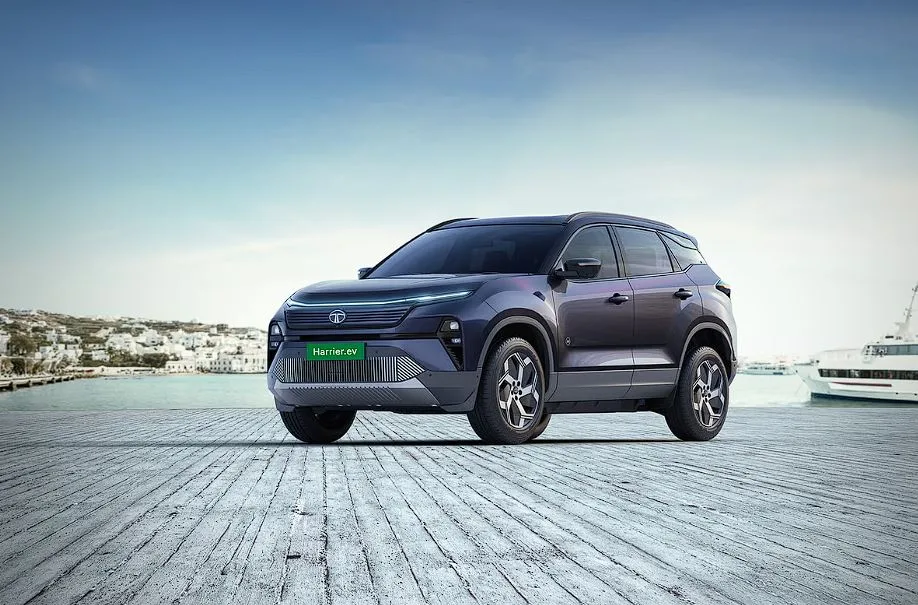
Tata Harrier EV: What to Expect from This Upcoming EV
While the Tata Harrier EV hasn’t officially launched yet, industry insiders and leaked information provide a compelling preview of what to expect from this homegrown challenger.
The Harrier EV is anticipated to feature a substantial 75 kWh battery, potentially delivering around 500 km of range. What has particularly caught attention is the expected dual-motor AWD (All-Wheel Drive) setup, which would give the Harrier EV an edge in performance and off-road capability.
One innovative feature generating buzz is the vehicle-to-vehicle charging capability, allowing the Harrier EV to share its charge with other electric vehicles – a potentially game-changing feature in a country still developing its charging infrastructure.
Vikram Patel, who has been following the development of the Harrier EV, shares his perspective: “Tata understands Indian roads and driving conditions better than most. If they can combine this local expertise with cutting-edge EV technology, the Harrier EV could be a compelling option.”
The expected price range of Rs 20 lakhs to Rs 25 lakhs would position the Harrier EV more accessibly than the Atto 3, potentially opening electric mobility to a broader segment of SUV buyers.
Head-to-Head: BYD Atto 3 vs Tata Harrier EV Specifications
When comparing these two electric SUVs, several key specifications stand out:
| Feature | BYD Atto 3 | Tata Harrier EV (Expected) |
|---|---|---|
| Battery Capacity | 49.92 kWh / 60.48 kWh | 75 kWh (expected) |
| Range | 468 km / 521 km (ARAI certified) | Around 500 km (expected) |
| Drive System | Front-wheel drive | Dual motor AWD setup |
| Special Features | LFP battery technology, Ventilated seats | Vehicle-to-Vehicle charging |
| Charging Time | 8 hours with 7.2 kWh charger | Not yet confirmed |
| Price Range | Rs 24.99 lakhs – Rs 33.99 lakhs | Rs 20 lakhs – Rs 25 lakhs (expected) |
| Current Status | Available now | Upcoming launch |
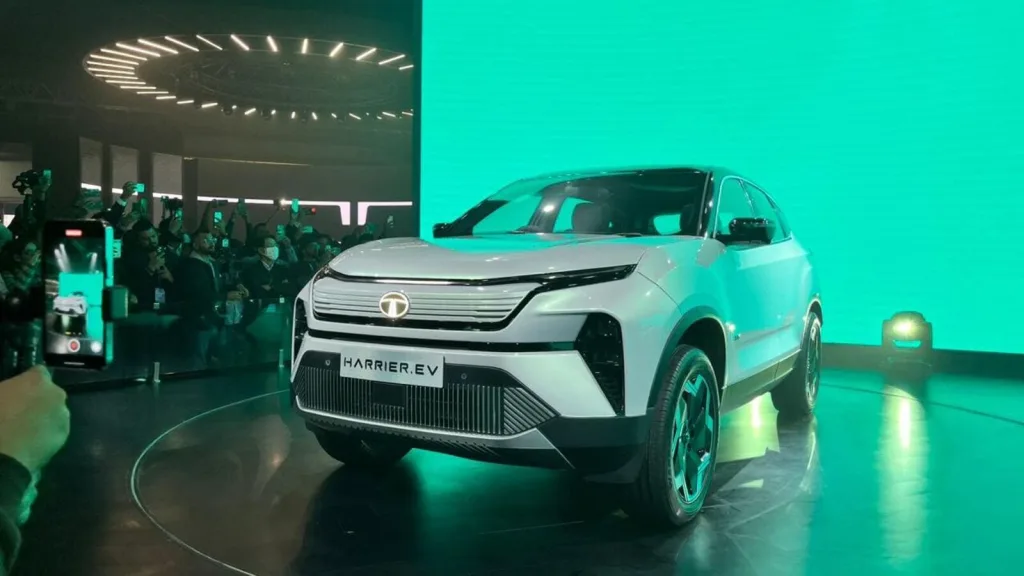
Electric Vehicles in India: The Growing Market
The electric vehicle landscape in India is evolving rapidly, with government initiatives like FAME II (Faster Adoption and Manufacturing of Electric Vehicles) providing impetus to both manufacturers and consumers. The entry of models like the BYD Atto 3 and the anticipated Tata Harrier EV signals a maturing market where consumers have increasingly sophisticated options.
“We’re seeing a shift from early adopters to mainstream consumers considering EVs,” explains Dr. Anjali Goyal, an electric mobility researcher. “The questions have evolved from ‘Should I buy an EV?’ to ‘Which EV should I buy?’ – that’s a significant market evolution.”
This shift is reflected in the growing charging infrastructure across urban centers and highways, though gaps remain in smaller cities and rural areas. Both BYD and Tata are investing in charging networks, recognizing that range anxiety remains a significant barrier to adoption.
BYD Atto 3 Specifications: A Detailed Look
Diving deeper into the BYD Atto 3 specifications reveals a vehicle designed with both performance and comfort in mind:
- Performance: The electric motor delivers 201 bhp and 310 Nm of torque, enabling a 0-100 km/h time of 7.3 seconds.
- Dimensions: Length of 4,455 mm, width of 1,875 mm, and height of 1,615 mm with a wheelbase of 2,720 mm.
- Battery Technology: The Blade Battery (LFP) technology offers enhanced safety and longevity.
- Interior Features: 12.8-inch rotating infotainment screen, wireless charging, panoramic sunroof, and multi-color ambient lighting.
- Safety: 7 airbags, 360-degree camera, ADAS features including adaptive cruise control and lane departure warning.
- Connectivity: NFC card key, smartphone app control, and OTA (Over-The-Air) updates.
The Atto 3’s European styling and build quality have received positive feedback from early adopters, though some note that after-sales service network is still developing compared to established players.
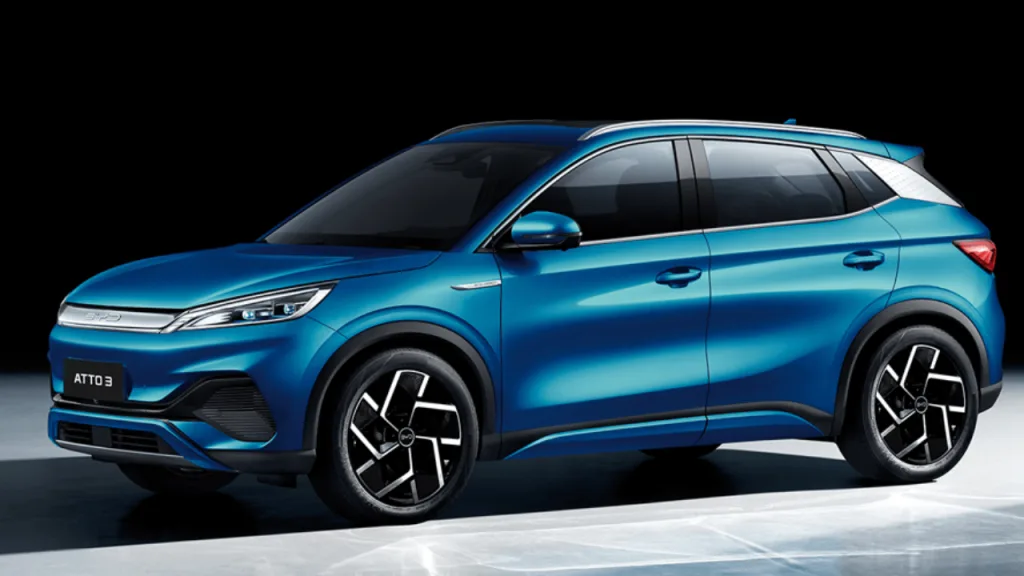
Tata Harrier EV Specifications: Anticipated Features
While official Tata Harrier EV specifications are yet to be released, industry experts anticipate several key features based on Tata’s EV development trajectory and concept showcases:
- Platform: Expected to be built on the OMEGA EV architecture, an evolution of the current Harrier’s OMEGA Arc platform.
- Performance: The dual-motor setup could deliver combined power output exceeding 200 bhp.
- Battery Management: Advanced thermal management system to optimize battery performance in varied Indian climate conditions.
- Interior: Digital cockpit with connected car features, potentially including some autonomous driving capabilities.
- Design: Expected to retain the bold styling of the ICE Harrier with EV-specific design elements.
- Charging Options: Multiple charging speeds including DC fast charging capability.
Tata’s experience with the Nexon EV and other electric models gives them valuable insights into Indian EV usage patterns, potentially allowing them to tailor the Harrier EV more precisely to local needs.
EV Comparison India: How These Models Stack Up
This EV comparison India focuses on two prominent models that represent different approaches to electric mobility. The BYD Atto 3 brings international expertise and proven technology, while the Tata Harrier EV promises to combine local knowledge with innovative features.
For urban dwellers with access to home charging, both vehicles offer sufficient range for daily commutes with occasional long trips. The Atto 3’s slightly longer range might appeal to those who frequently travel between cities, though the difference is unlikely to be decisive for most users.
The price differential could be significant, with the Harrier EV potentially offering better value, especially in its lower variants. However, the Atto 3’s premium features and established global reputation might justify its higher price point for some buyers.
Deepak Khanna, who recently test drove the Atto 3, shares his experience: “The build quality and driving dynamics impressed me. It feels like a premium European car rather than what people might expect from a Chinese brand. The rotating screen is a conversation starter, though I’m not sure how practical it is day-to-day.”
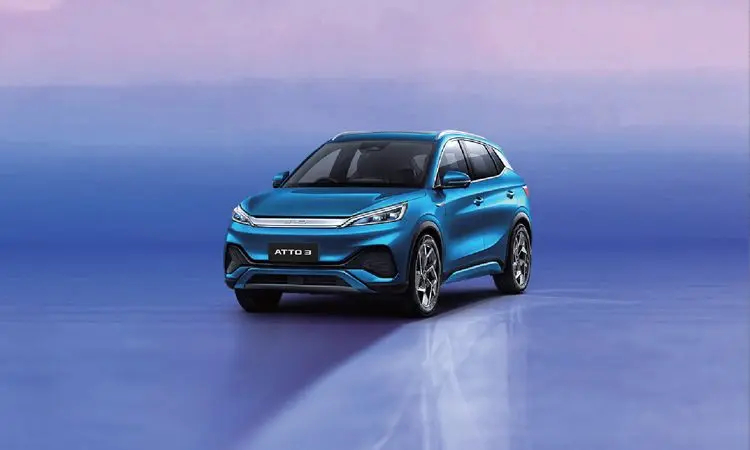
Which EV Is Right for You?
Choosing between the BYD Atto 3 and Tata Harrier EV ultimately depends on your specific needs and preferences:
Consider the BYD Atto 3 if:
- You value proven international EV technology
- Premium interior features are important to you
- You prefer a vehicle that’s available immediately
- You’re comfortable with a newer brand in the Indian market
- The slightly longer range aligns with your travel patterns
Consider waiting for the Tata Harrier EV if:
- You prefer a homegrown brand with an established service network
- All-wheel drive capability is important for your usage
- Vehicle-to-vehicle charging seems useful for your situation
- You’re looking for potentially better value at a lower price point
- You’re not in a hurry to make the switch to electric
Both vehicles represent significant steps forward in India’s electric mobility journey, offering capabilities that were unavailable just a few years ago.
Conclusion: The Future of Electric SUVs in India
The comparison between BYD Atto 3 vs Tata Harrier EV illustrates the exciting evolution of India’s electric vehicle market. From global players bringing international expertise to homegrown manufacturers leveraging local insights, consumers now have increasingly sophisticated choices.
As Neha Gupta, an early EV adopter, puts it: “Three years ago, my options were severely limited if I wanted an electric SUV with decent range. Today, I’m comparing features and deciding between multiple viable options. That’s real progress.”
Whether you choose the immediately available BYD Atto 3 with its proven technology or wait for the promising Tata Harrier EV with its potentially innovative features, you’re participating in India’s electric mobility revolution. As charging infrastructure continues to expand and technology evolves further, these vehicles represent not just transportation choices but stepping stones toward a more sustainable automotive future.
The decision ultimately comes down to your specific needs, preferences, and timing – but either way, the road ahead looks increasingly electric.


